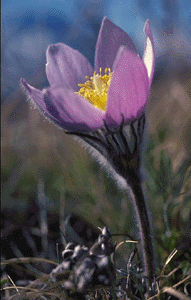|
Going, Going........
Prior to European settlement, tall grass prairie covered one million square kilometres in central
North America, stretching from Texas to southern Manitoba. Today, tall grass prairie is all but gone. In Manitoba only 1/20th
of 1% of the original tall grass prairie remains. The Living Prairie Museum, within the confines of the city of Winnipeg, is
one of the few remaining fragments of this once vast ecosystem.
Untouched Prairie In A City

The Living Prairie Museum is a 12 hectare (30 acre) tall grass prairie preserve located inside the City of Winnipeg.
Set aside in 1968, this preserve is home to over 160 species of prairie plants and a great array of prairie wildlife. Prior
to European settlement, tall grass prairie covered one million square kilometres in central North America, stretching from
Texas to southern Manitoba. Today, tall grass prairie is all but gone. In Manitoba only 1/20th of 1% of the original tall
grass prairie remains. The Living Prairie Museum is one of the few remaining fragments of this once vast ecosystem.
Prairie
is more than flat land. It includes wildflowers, birds, and animals. as well as humans, who have adapted to the land throughout
the centuries.
Not all prairies are the same. They vary across North America, depending on climate and soil conditions
In Winnipeg we have the prairie type called the Tall Grass or True Prairie.
The early Canadian explorer, Pierre Gaultier de Varennes, sieur de La Verendrye, noted in his diary that the prairie grasses near the junction of the Red and Assiniboine Rivers were "shoulder high". One
of the reasons for Winnipeg's tall grass is that more rainfall occurs here, than further west, usually! This zone marks the
eastern edge of the great grasslands. The demand for agricultural and residential land has resulted in very liitle tall
grass prairie left unploughed as La Verendrye found it. In 1968 a local sub-committee of the International Biological
Programme undertook a search of Manitoba for unploughed soil with native prairie plants. Of the more than sixty sites that
were investigated, only four were found unploughed. Ironically the largest of the four was discovered in an urban area, Winnipeg.
The Living Prairie Museum, catergorised as a City of Winnipeg Nature Park, can be found at 2795 Ness Avenue and admission
is free. It is a unique remnant of our natural heritage, preserved for our education and enjoyment and that of generations
to come.
interpretive programmes @ the museum
The Museum's opening, for the season generally coincides with the blooming of the Prairie Crocus, Manitoba's provincial flower, on Crocus Weekend, the last weekend in April, special programmes and guided hikes are
available to celebrate spring's arrival.
|
 |
|
 |
 |
|
"trademarks", a sea of grass
wind and fire, saving it.
this brochure is a mine of
information on the tall grass
ecosystem of Manitoba
a small website based on the
Manitoba Tall Grass Prairie Brochure;
and very well done too!
an off-shoot of the
Nature North webite
found primarily in the
Northern Tallgrass ecoregion
ranging along the Red River basin
in Minnesota and the Dakotas to
Lake Manitoba in Canada
a 12 hectare (30acre) tall grass
prairie preserve located inside
the City of Winnipeg. set
aside in 1968, this preserve
is home to over 160 species
of prairie plants and a great
array of prairie wildlife
|
|
related internet links
|
|
a strong, clear voice for Nature!
Manitoba's online nature magazine,
where we celebrate the biodiversity
of this great province.
|
|
 |
 |
|
 |
 |
 |
|
|
 |
 |
 |
|
|
|

